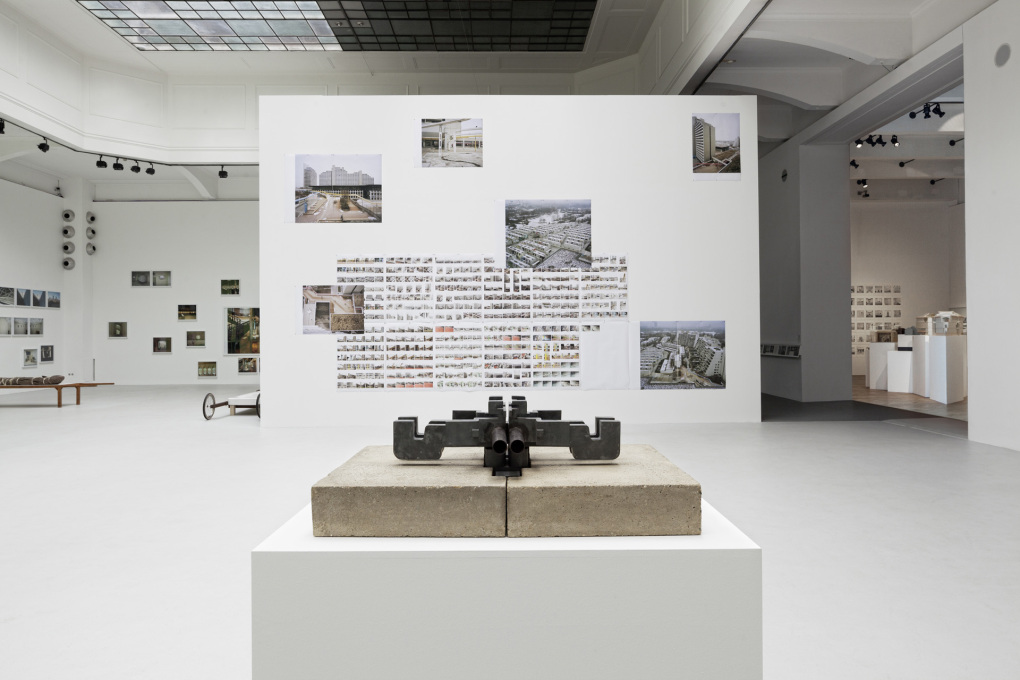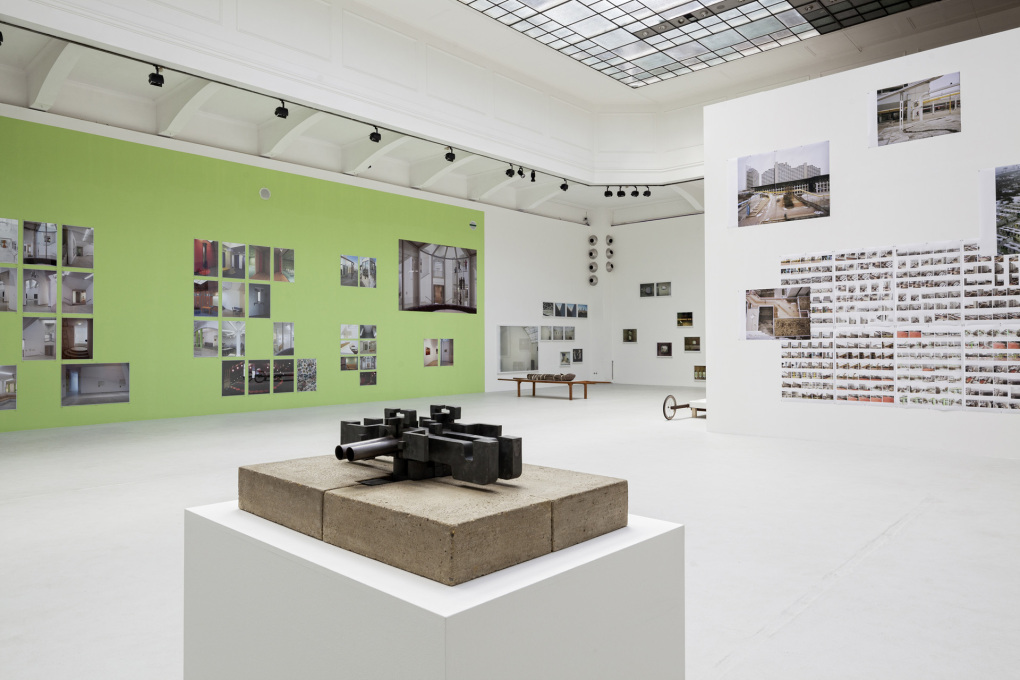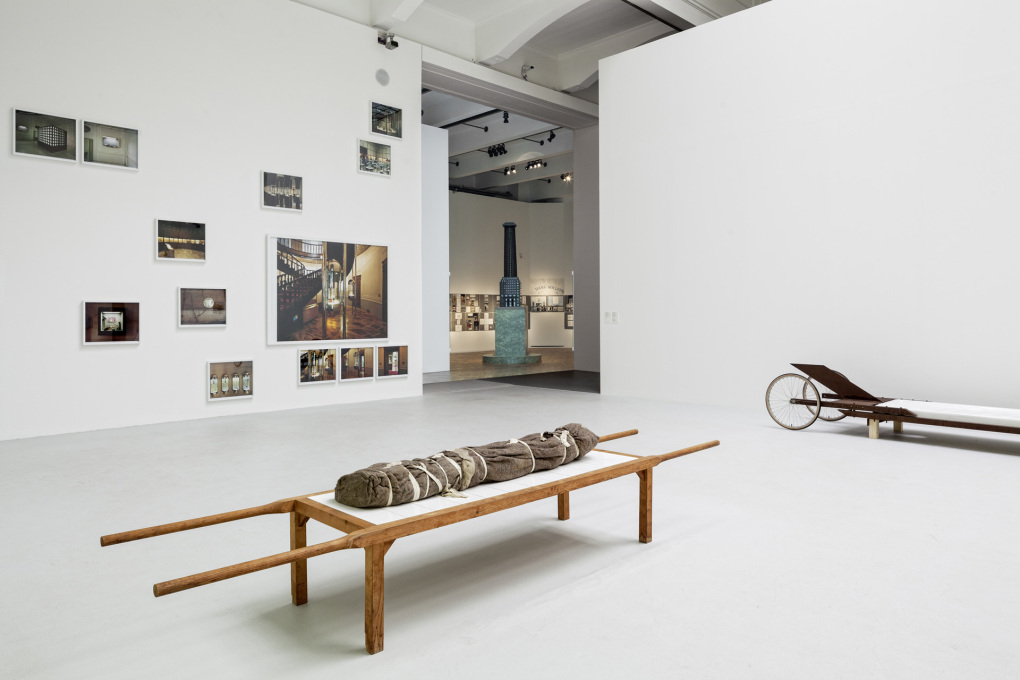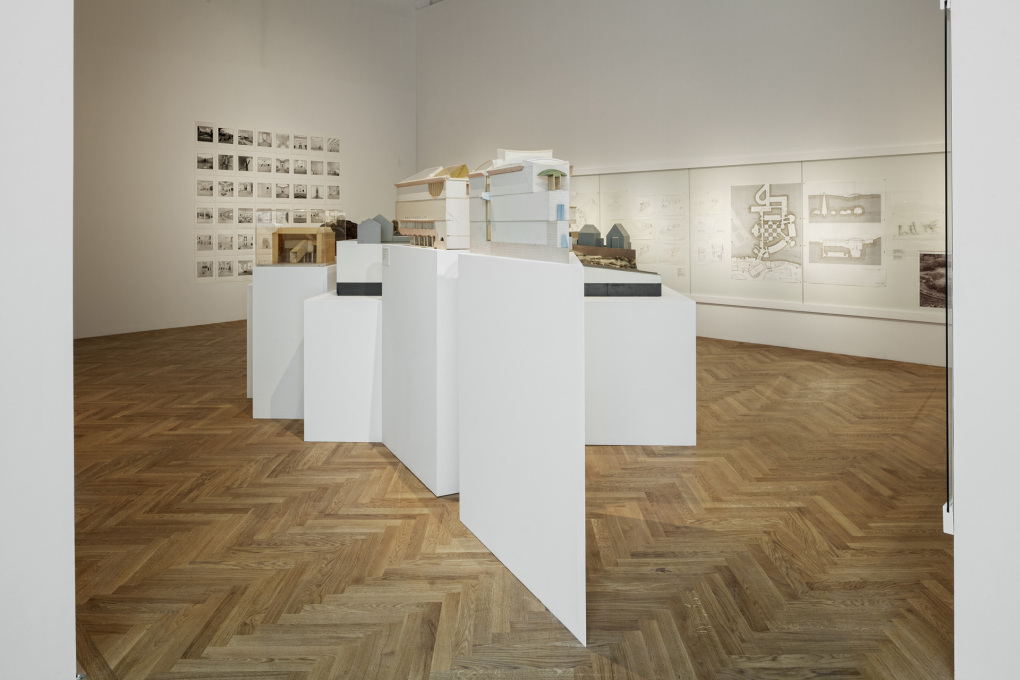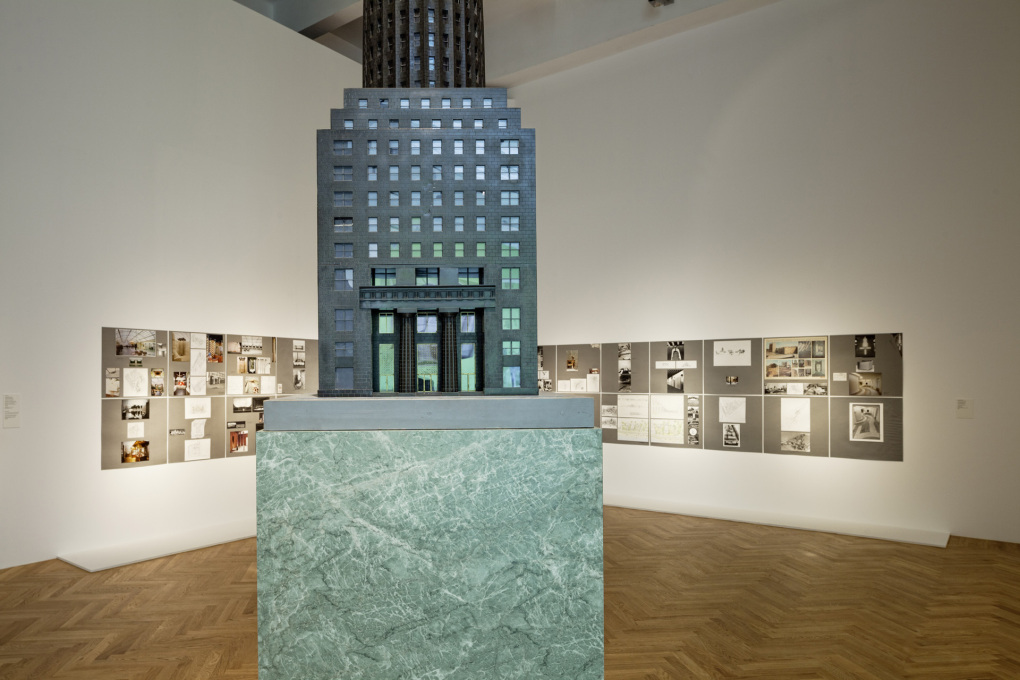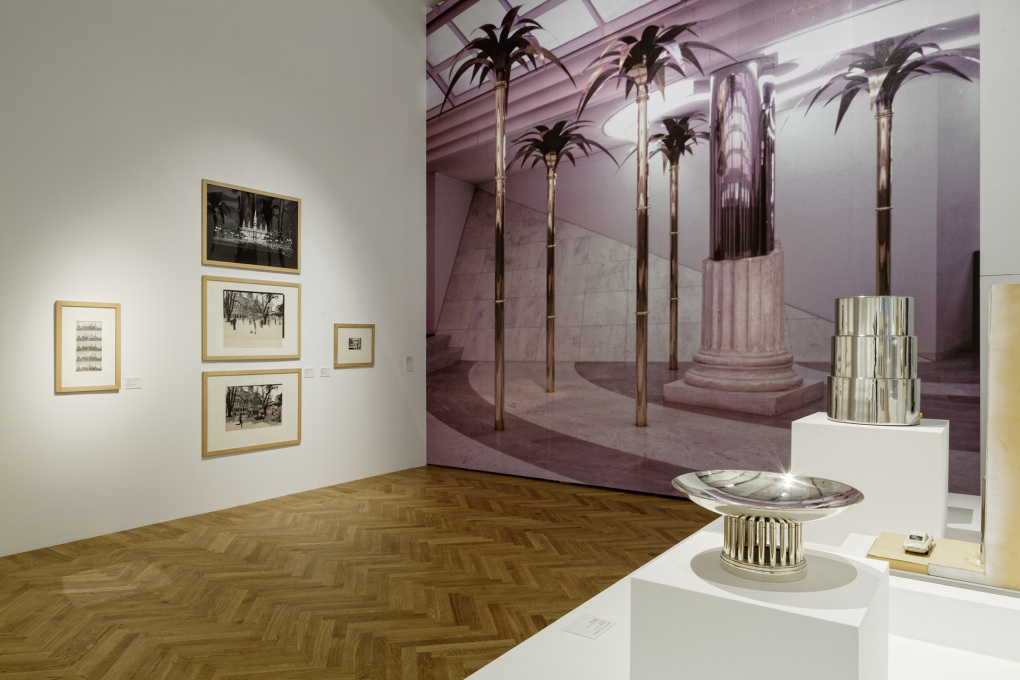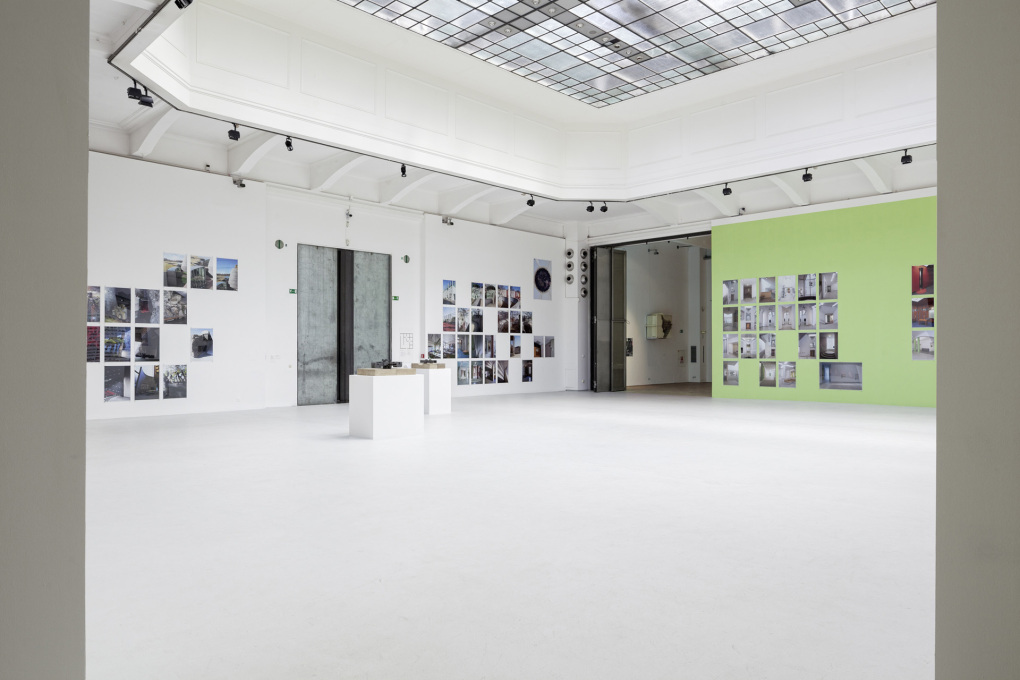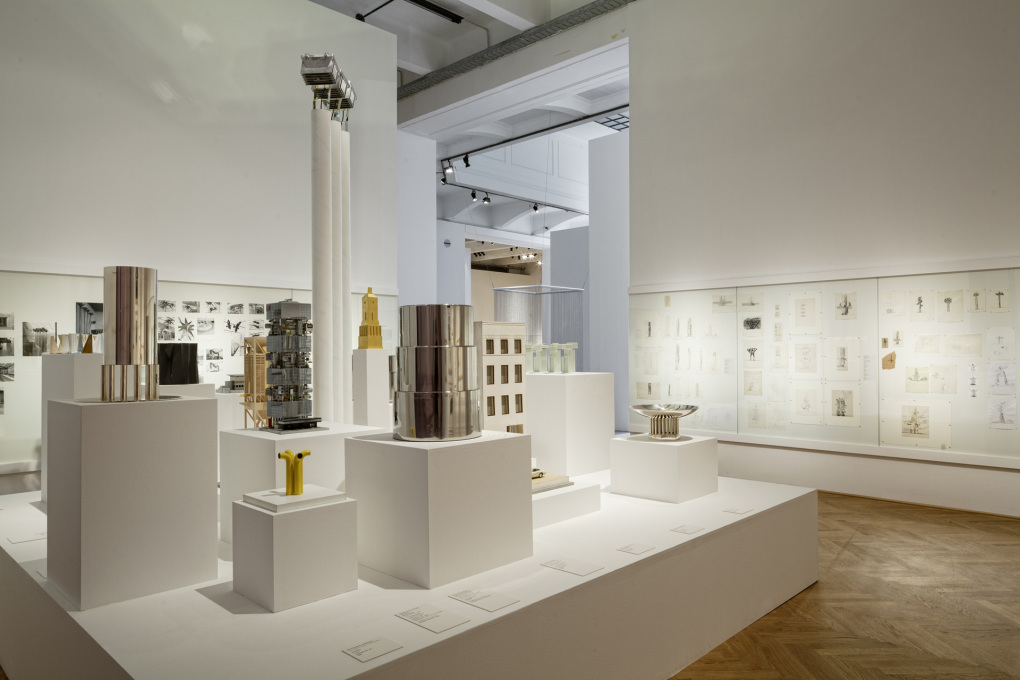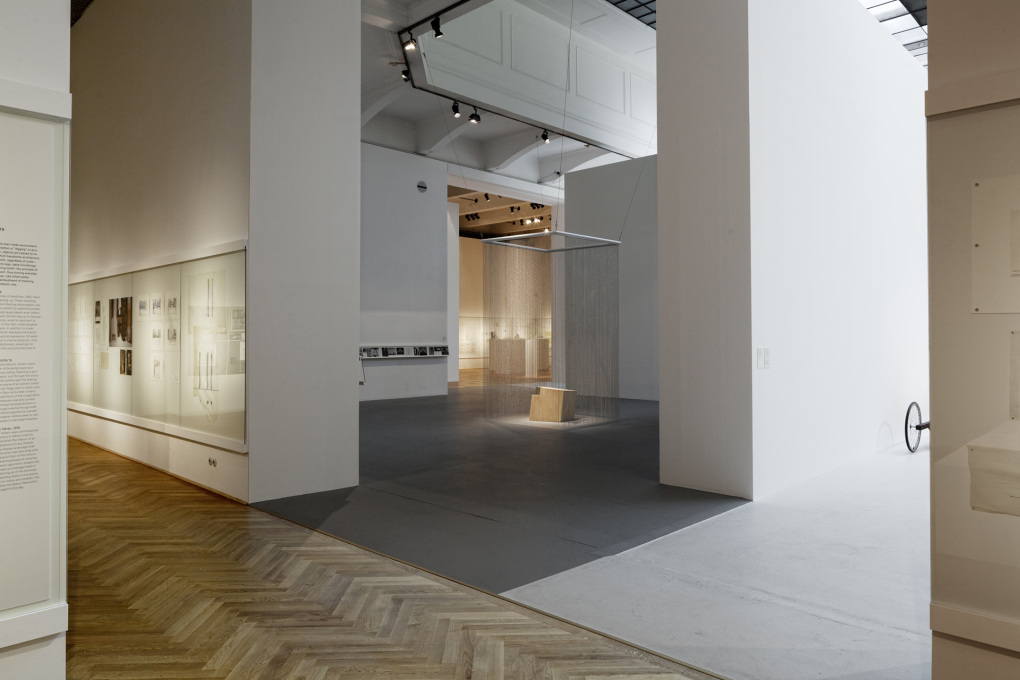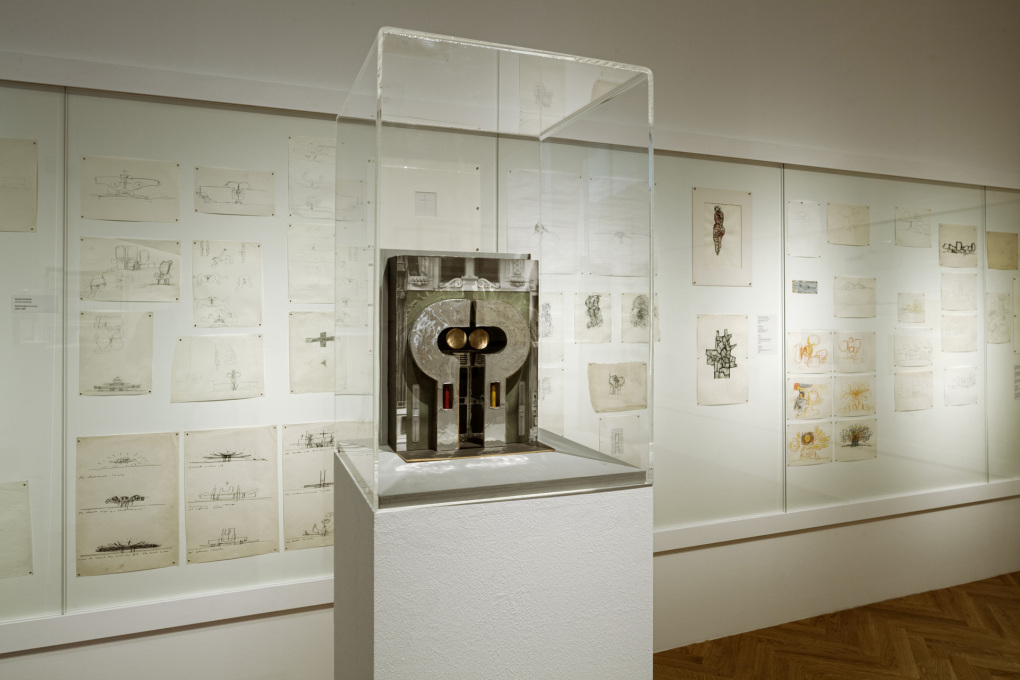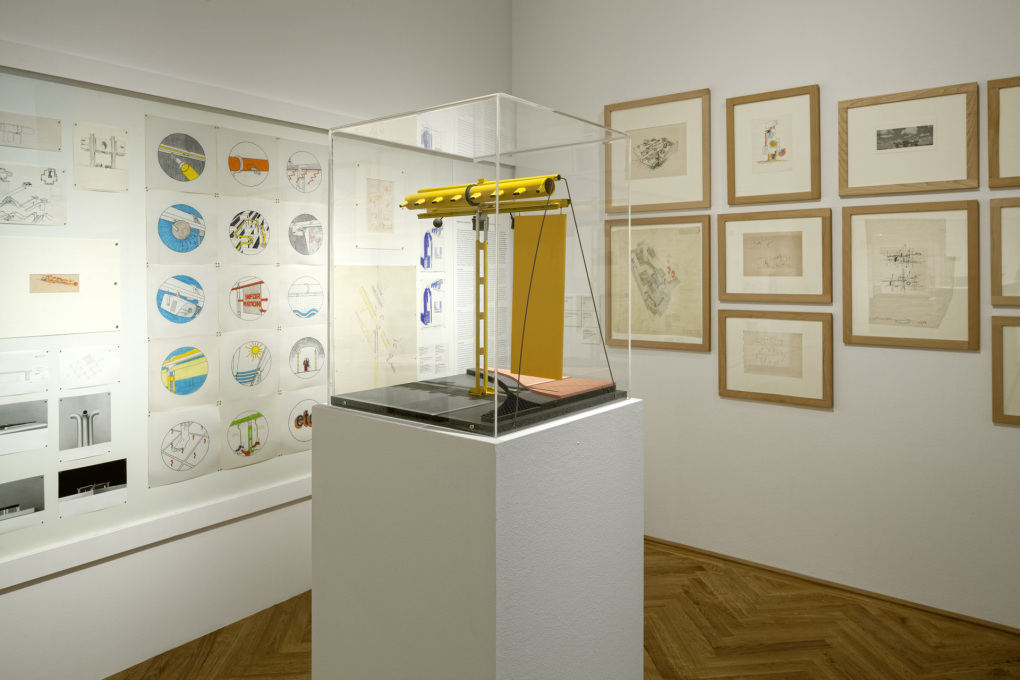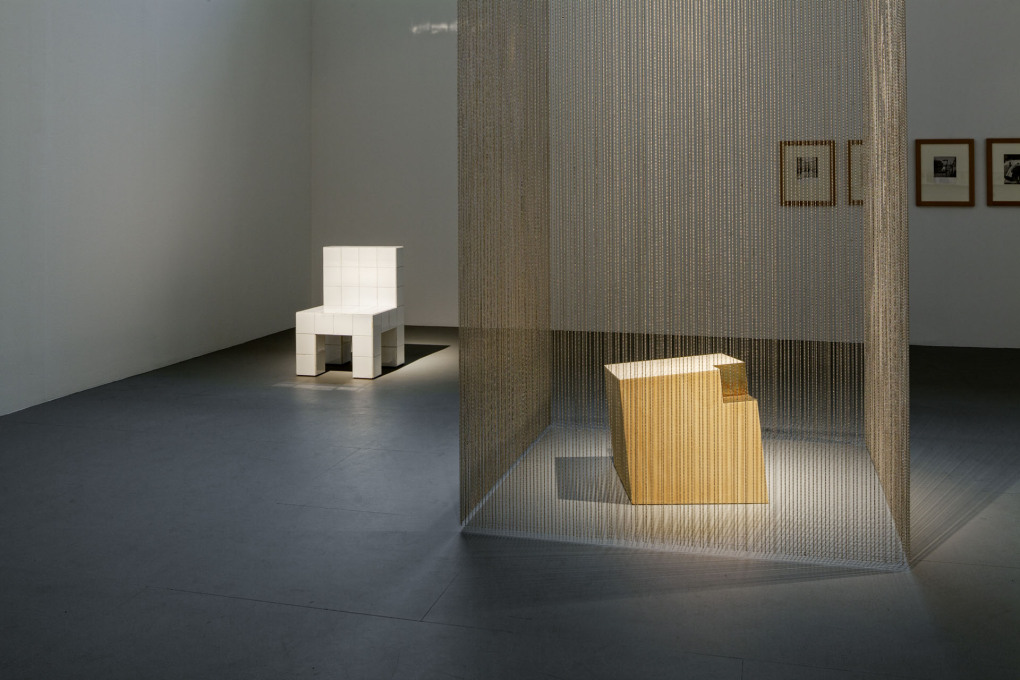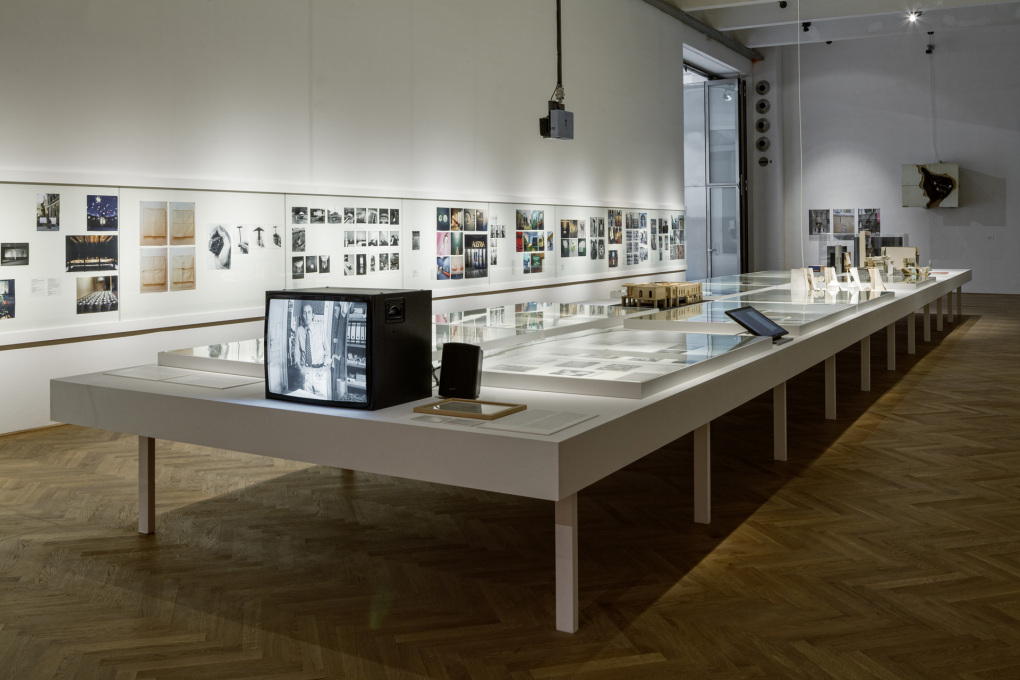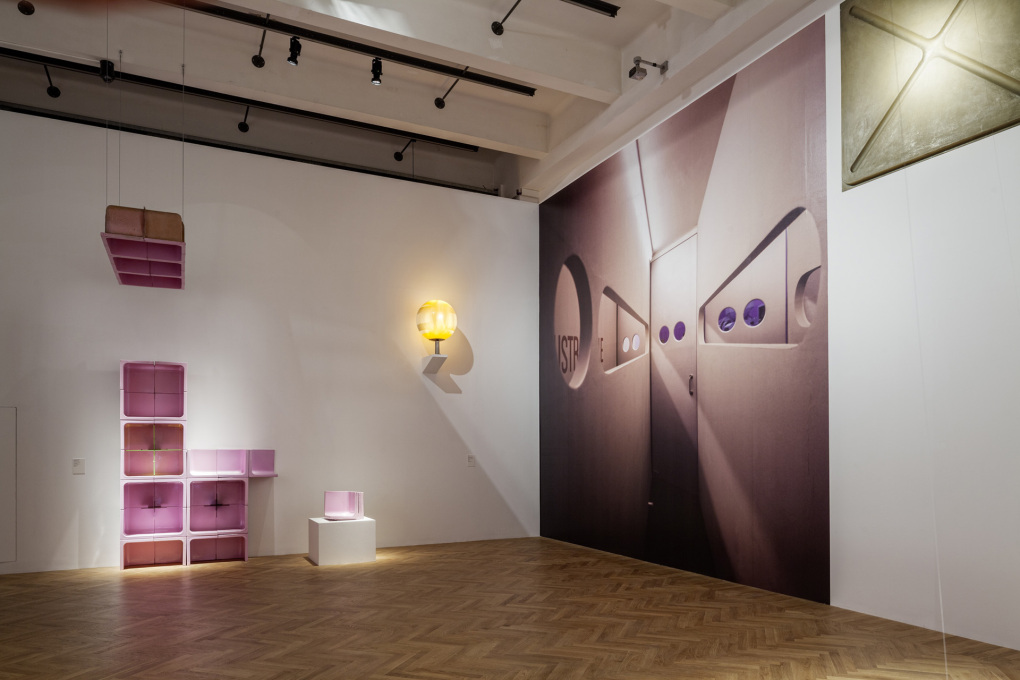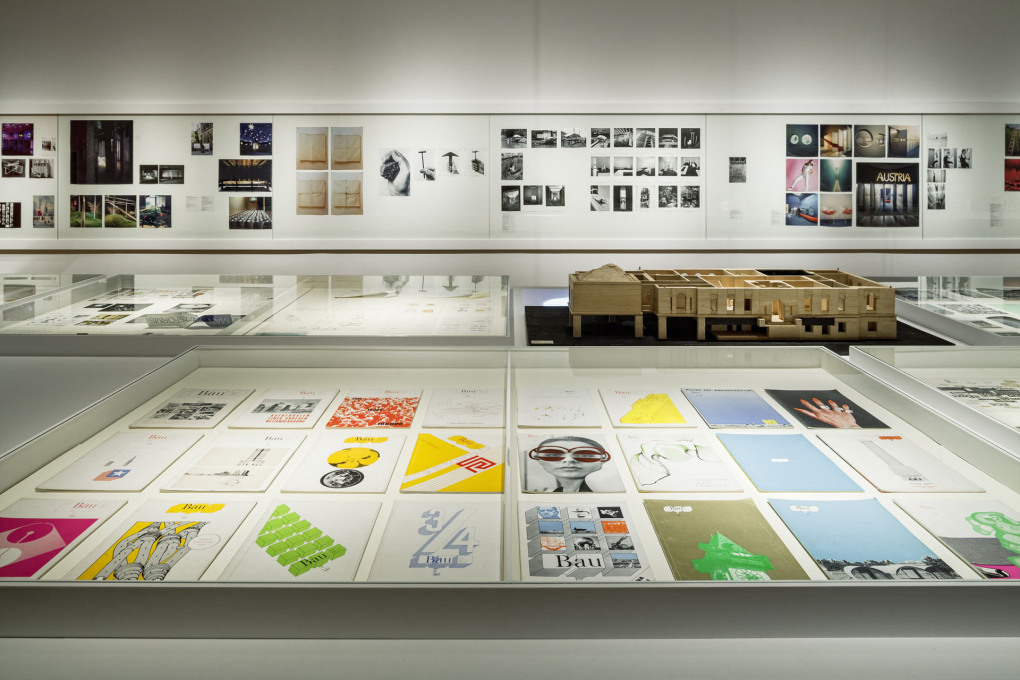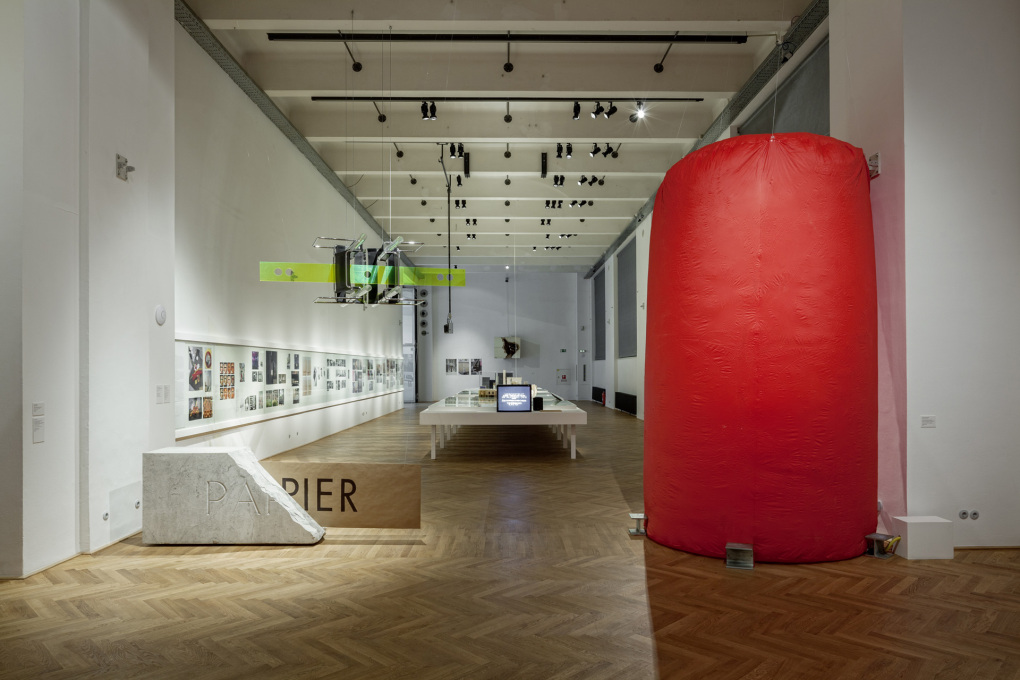The exhibition HOLLEIN in Vienna's Museum for Applied Arts (MAK) presents the art and architecture of the multifaceted Austrian architect/designer Hans Hollein, who passed away in early 2014. It offers an unconventional look at his drawings and built projects and showcases seldom-seen works.
Christa and Kaspar Ludwig Metek were among the first of Hans Hollein’s clients. In 1966 the couple commissioned the 32-year-old shooting star to design a small fashion boutique in Tegetthoffstrasse in the heart of Vienna. Hollein confronted the boutique’s woollen inventory with plastic, creating the world’s first commercial interior that was made entirely of synthetic materials.
Today, Boutique CM may soon be a thing of the past. Its historically listed portal is barricaded shut. Furniture elements have recently been dismantled and sold off to various institutions. The Museum of Applied Arts (MAK) in Vienna has acquired a few and is now presenting them, alongside many other pieces in the exhibition HOLLEIN. Their major retrospective curated by Marlies Wirth and Wilfried Kuehn was originally planned as a tribute to Hollein for his eightieth birthday. Now it is the first comprehensive posthumous exhibition of the life work of the Austrian Pritzker Prize winner, who passed away this April.
“Hollein was a forerunner of the architects and artists of the Internet generation. He anticipated much that would later prove to be true,” explained MAK director Christoph Thun-Hohenstein during the press conference. “It is for this reason that he must be appreciated.” The exhibition is also an opportunity to delve into Hollein’s archive and legacy and offers new ways of contemplating his influential and multifaceted universe.
One such new approach to Hollein’s architecture involved commissioning two artist photographers to re-photograph some of his buildings from the past decades – complete with signs of wear and age. Armin Linke (Berlin) and Aglaia Konrad (Brussels) travelled throughout Europe and even as far as Tehran, where Hollein designed the Museum for Glass and Ceramics in 1977, to omplete their task. They returned with an impressive collection of rather unconventional architectural photography. Instead of aesthetic, sterile alienation, the exhibition consists primarily of large-format photographs that do not shy away from reflecting the not-always-nice daily life of architecture. This is most evident in the Media-Linien (“Media Lines”) that Hollein built for Munich’s Olympic Village in 1972. The 1.6 kilometre-long communication and orientation system of colourfully painted pipes is still in place, but has certainly seen better days.
“Much is getting on in years, and my father would surely have preferred to see it presented somewhat differently,” said Hollein’s daughter Lilli in an interview with the Austrian newspaper Standard. “But thanks to the perspectives offered by Aglaia Konrad and Armin Linke a new, entirely different level of commentary has been created.” It is precisely this unadorned, behind-the-scenes perspective that makes the MAK exhibition so worth seeing.
Anyone with enough time will also be able to discover the profound and at times quite cheeky humour of this universal artist. On display in one room, for example, are his “Architecture Pills”, titled Miss Austria, Alpenglühen (“Alpine Glow”) and Wohnviertel (“Residential District”), the “SOS pill” Einfamilienhaus in ländlicher Umgebung ( “Single Family House in Rural Setting”), as well as Svobodair, a spray Hollein concocted in 1968 to change the environment. In a film produced by Austrian television station ORF in 1969, Hollein dons a kind of communications helmet with an integrated display and headphones in order to receive news from around the world. He anticipated technologies, consumer behaviour, and Austrian spatial planning decades before their time.
One of the show’s gems is the seldom depicted and sparsely documented US Embassy in Moscow. Designed in 1973 in the depths of the Cold War, the base is like a real-life hybrid of James Bond, David Lynch and Jacques Tati. A complex and at times entirely new Hans Hollein can be discovered at the exhibition. (Translated by Alisa Anh Kotmair)
- Wojciech Czaja is a freelance architecture journalist covering mainly Austria, Germany, Switzerland and Croatia. He is a regular architecture and real estate critic for the Austrian newspaper Der Standard.
HOLLEIN
25 June - 5 October 2014
Museum of Applied Arts, Vienna




